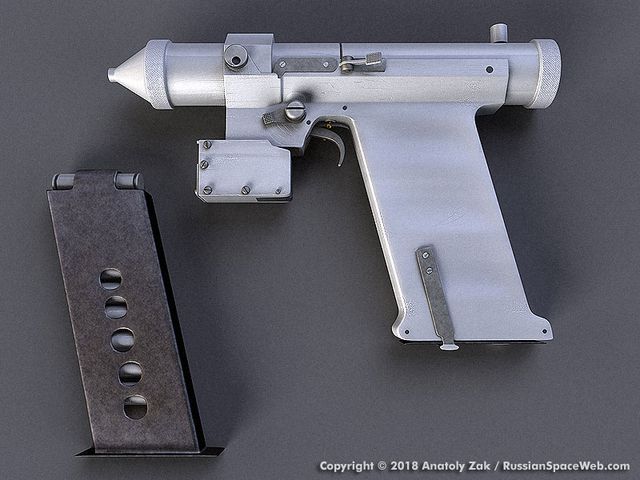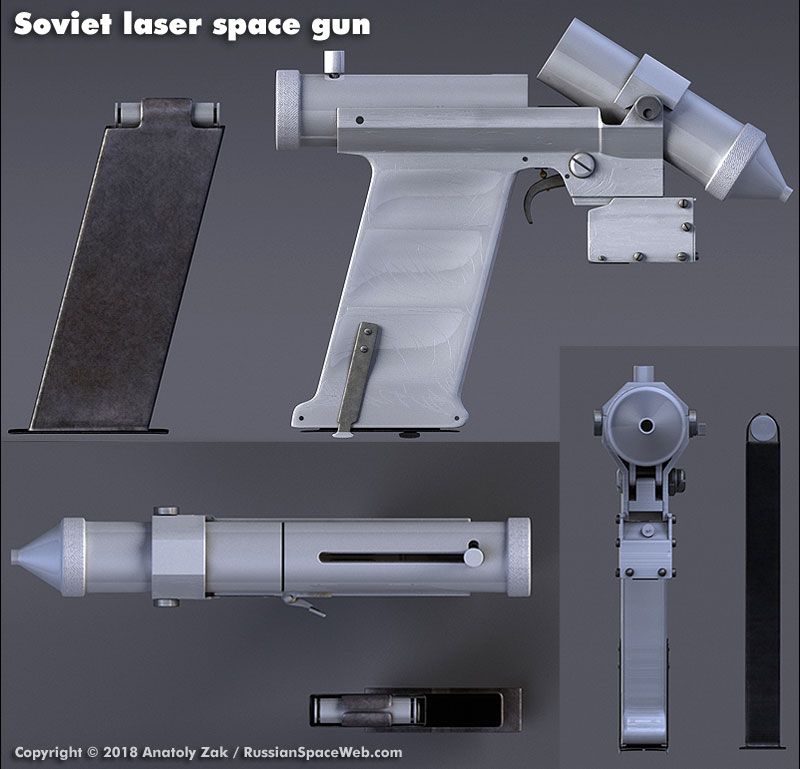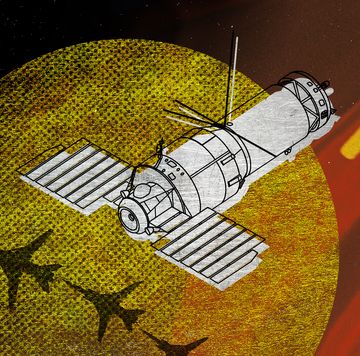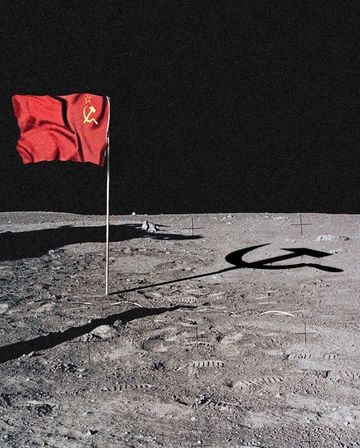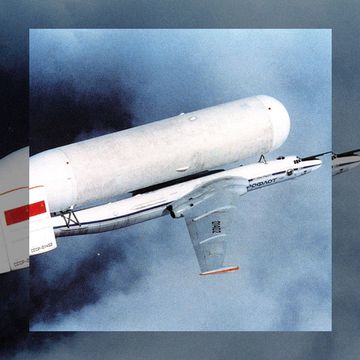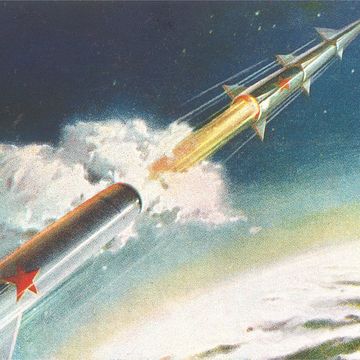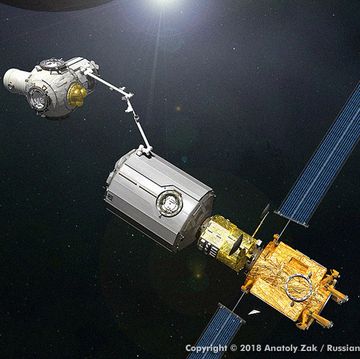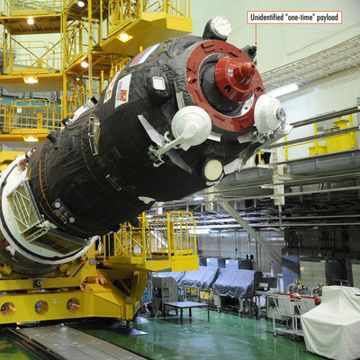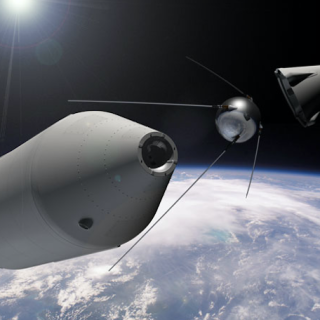Move over, Star Wars. Around the same time that Han Solo was declaring the superiority of a blaster by your side, Russian engineers were working on a real laser pistol for cosmonauts to carry, another piece of the secret Soviet arsenal of space weapons.
According to multiple Russian sources, the laser-powered handgun for cosmonauts originated at the Peter the Great RVSN academy, which trains engineers for the nation’s strategic missile forces. The school’s museum carries a copy of the gun, and at least one other surviving artifact was exhibited at the Innovations and Inventions Expo in Moscow in 2011.
Demyan Makarenko, who represented the Peter the Great Academy at that event, said in a video interview that the laser space gun had been conceived for the Soviet military space station Almaz (“diamond”), which was under development in the USSR in the second half of the 1960s and first flew in 1973. We already knew the Soviets made a conventional orbital cannon to be installed on the exterior of the Almaz. However, the personal laser handgun remained in obscurity.
Some Russian sources characterized the laser pistol as an individual self-defense weapon for cosmonauts in orbit, making an impression that the Soviet space crews were preparing for shootouts with their enemies inside the space station. But even in the paranoid atmosphere of the Cold War, it would be hard to imagine a scenario in which American “space troopers” would be able to rendezvous, dock, and break into the pressurized compartment of a Soviet orbital facility. Even if they did, a relatively weak laser gun would be a questionable defense.
“Sorry, I have to tell you right away, it has no deadly force, so you wouldn’t be able to see a hole in the head of your ‘client’ after firing this thing…” Makarenko joked in the video interview.
Instead, the device appears to be an anti-satellite weapon, designed to blind sensitive optics and other sensors aboard a hostile spacecraft that dared to approach the Soviet orbiter. Back then, spacefaring countries were considering projects with robotic and even piloted inspector spacecraft that would be able to intercept, photograph, and even physically interact with un-cooperating satellites. Soviet space strategists even suspected that the Space Shuttle, which began development in 1971, would be able to snatch their secret satellites from orbit and even carry them back to Earth inside its huge cargo bay.
That didn’t turn out to be the case, but the worry prompted the USSR to invent various defenses, including the laser handgun. The laser pistol was promised to be smaller and lighter than an outright space cannon, and those issues matter a lot in space. In fact, the goal was to make the laser pistol as small and light as a normal handgun.
The available Russian sources do not elaborate whether cosmonauts could use the weapon on a spacewalk outside the station. Presumably, they could fire the laser gun at the enemy spacecraft through the window, while staying safely in the pressurized compartment.
According to one memoir, Major General Viktor Sulakvelidze, who worked as a professor at the Peter the Great Academy, led the development team in the laser handgun project. Boris Duvanov, meanwhile, dealt with theoretical and experimental research associated with the secret program. The concept of the laser handgun was greatly aided by the fact that sensitive and crucial navigation optics aboard the satellites could be taken out of business with a relatively low amount of light energy—around 10 joules, Russian sources estimated. The optical system of the target would magnify the incoming flash to fry vulnerable sensors at its focus.
The main challenge for the creators of the laser gun was a miniature flashlight, which would be used to “pump” electrons in the laser to a higher energy state, needed to generate a powerful light beam. Also, all the chemicals used inside the gun had to be non-toxic for the atmosphere of the space station, and fire-safe to boot.
To meet all the requirements, Soviet engineers designed a lamp filled with oxygen and containing metallic foil or powder. Instead of magnesium, which was traditionally used in strobe lights, the laser would be “fueled” by zirconium, which produced three times more light energy. Some metallic salt additives were used to match the wavelength of the flash with the range of the laser system. An yttrium aluminum garnet crystal initially served as a “medium” where the infrared laser beam would be generated after each flash.
When ignited by an electric spark from a tungsten-rhenium string in the oxygen filled atmosphere, the lamp would shine for just 5 or 10 milliseconds, producing a remarkable temperature of around 5,000 K. The weapon was reported to retain its blinding force up to a range of 20 meters (65 feet).
Needless to say, each lamp would die after a single flash, so it was designed in a form of bullet with a caliber of 10 millimeters, which would be loaded from a cartridge containing eight shots. After each shot, the expended lamp would be ejected from the pistol like a bullet casing in a regular gun. The follow-on semi-automatic laser revolver holding six bullets was also built. Russian sources also mention other versions of the device as well, including a some kind of medical instrument based on it. According to one source, the laser pistol still needed an external power source, even though some photos of the device show what appears to be a strap-on battery.
The Laser Gun with Pyrotechnic Flash Lamp, as the project came to be officially known, was reportedly ready for use in 1984, seven years after the USSR had sent its final crew to the Almaz space station. Although the civilian space station program has continued in the Soviet Union and later in Russia, it appears that the laser pistol never made it into orbit. Even so, it can be considered a precursor of today’s laser pointers and other similar gizmos.
Anatoly Zak is the publisher of RussianSpaceWeb and the author of Russia in Space: The Past Explained, the Future Explored.

